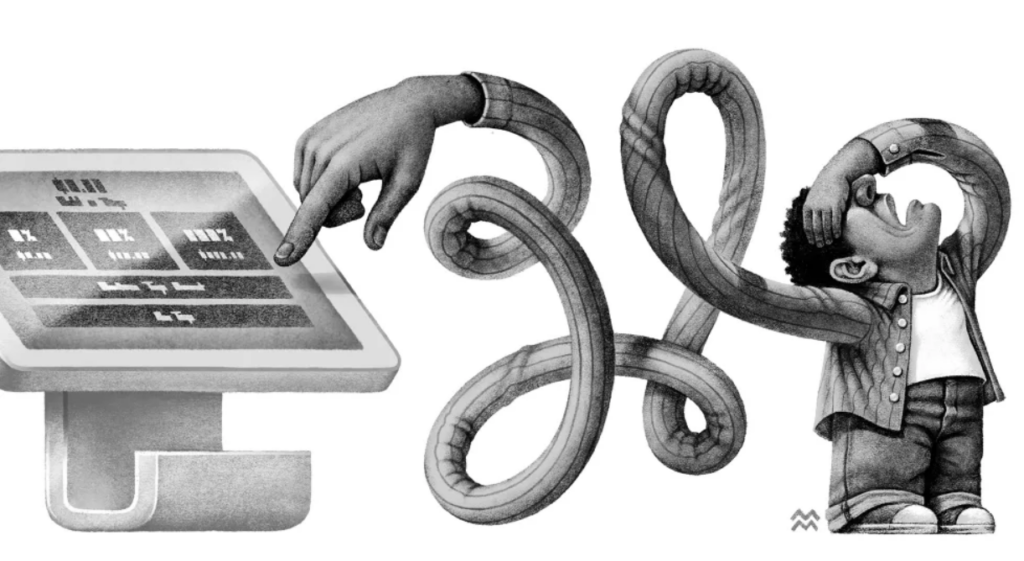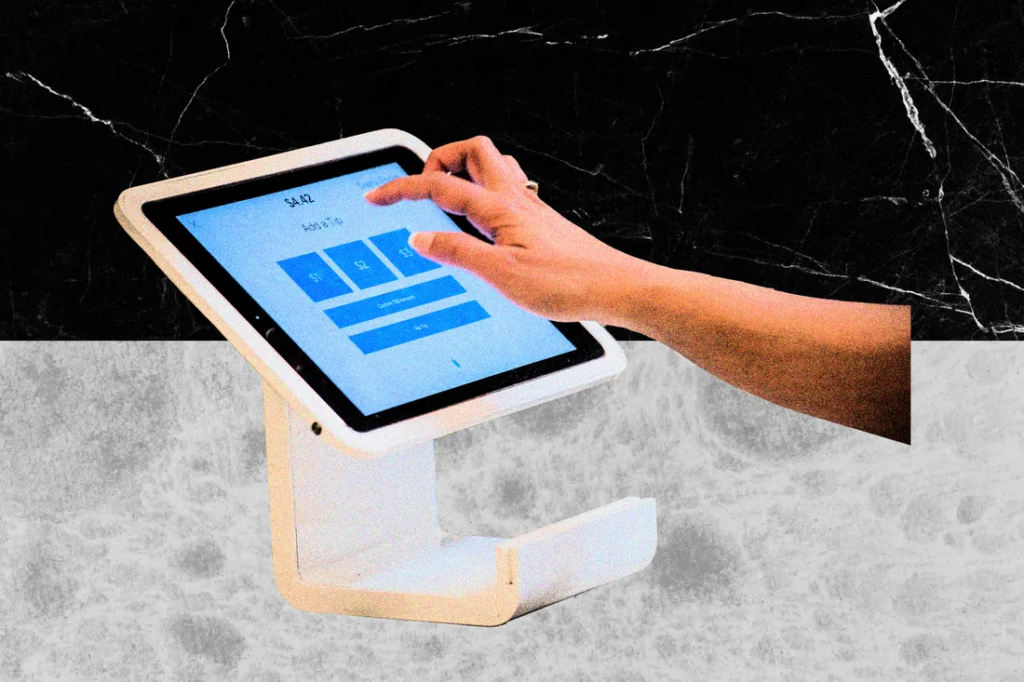
Tipping was originally reserved for certain services: waiters who took your order and made your supper enjoyable, bellhops who carried your baggage, and hairdressers who kept you looking sharp in the latest fashions.
Now, tipping possibilities are everywhere. Carryout workers anticipate tips. Bagel servers demand tips. Sports stadium concessionaires and Subway workers anticipate tips.
Customers are fed up.
After ordering and picking up pizza online and being asked to tip 20%, one man vented on TikTok. What for? “What happened?”
Reddit user bought a Dr Pepper at a self-serve kiosk, which offered a tip. he wrote.
Touchscreen checkouts have exacerbated the issue. The displays include pre-set buttons for tipping 30% or more.
These touchscreens or iPads are causing “guilt tipping” annoyance, according to etiquette expert Diane Gottsman. She advises in her 2023 Tipping Guide to predetermine how much you would tip if you were paying cash.
Large percentages make us feel guilty. People sometimes question their judgment due to peer pressure. “Tip what feels right,” she wrote.
After buying a coffee and cake for herself and her kid, Amy Rich of Ballwin, Missouri, left a gratuity at Starbucks. Touchscreens are convenient, she noted.
Rich stated she always tips at least 20%.
I’ll donate $2 on a $3 bill. They’re not paid much. “The restaurant industry isn’t paid well, and that’s bad,” she remarked.

Pandemic mode
Jaime Peters, a Maryville University personal finance professor, said the coronavirus affected tipping patterns. Customers were glad to help as small firms closed.
Some formerly untipped companies started asking for tips.
“Then came Square,” Peters added, referring to the St. Louis business that changed credit card processing. Since we were not using cash, the program updated for those tip options. Cash was discouraged.”
A Square representative said restaurants and businesses could use touchscreens to request tips before the outbreak. Businesses may switch on tipping and utilize Square’s pre-set amounts (no tip, 15%, 20%, or 25% on invoices over $10) or establish their own.
30% or more alternatives come in.

During the epidemic, more companies used it. The outbreak subsided, but the software remained. Peters said that’s altering their perceptions.
Changed mind
We now see it as a wage supplement rather as a reward for exceptional service.
“Tipping has increased as the gap between a living wage and what we are legally required to pay tipped employees has grown,” she added.
Missouri’s minimum wage is $12, however tippers must be paid at least $6 per hour. Tipped workers in Illinois must be paid at least $7.80 per hour, 60% of the minimum wage of $13.
Federally, tipped workers receive $2.13 per hour. 15 states and 3 territories need that.
Tips should always raise compensation to minimum wage. If they fall short, the company must make up the shortfall.
Peters suggested clients must rethink tipping due to these workers’ poor non-tip pay.
You’re not tipping because he’s excellent. Temporary employment accounts for 20%. “I tip above 20%,” she remarked.
Resting on tips
However, some customers are pushing back, notably in coffee shops and fast-food restaurants where gratuities were not customarily provided. Peters agreed.
“If you skip the tip jar, you are not alone. She stated around half of poll respondents say no, they don’t tip.
Some clients are worried about “pre-tipping.” That happens when a client orders a pizza online and is requested to tip before it is delivered. Customer doesn’t know service quality.
Paul Kruta, manager of Kruta Bakery in Collinsville, Missouri, said tipping is casual.
“We’ve never discouraged tipping,” he remarked. The 1919-founded company lacks a touchscreen credit-card payment method.
He added customers who want to tip their waitress will give them a dollar or two or retain the change.
Business part
Since opening in 2015, Union Loafers Café and Bread Bakery in Botanical Heights has featured a tip jar for its bread-selling employees. After the coronavirus, more customers left tips, especially after the business switched to a touch-screen payment mechanism with a tipping option.
The company’ revenues depend on the tips, according to Steve Russell, general manager since the outset.
The shop may pay lower hourly wages because employees will get gratuities. The shop would have to raise prices to pay greater wages if there were no gratuities, risking market exclusion.
Russell added “ultimately it is an optional thing” that many bakery customers tip. If they don’t, that’s OK.”
He stated Union Loafers tippers leave 15% to 20%, depending on the day and season. The bakery’s pre-set buttons are 15%, 20%, and 25%. Most consumers will pick 20%.
A custom tip button lets customers leave any amount.
Tipping lets guests express their gratitude. Russell said it gives workers a cash boost.
Staff appreciates it.
Leaving some extra
Donna Tisdale, a Great Clips hair stylist at Fenton Crossing, earns around one-third of her revenue from tips.
She stated the epidemic increased it.
“I think people had a new appreciation of us trying to cut their hair,” said Tisdale, who was hospitalized for a week with the infection.
Tisdale, a 37-year hairstylist, tips at least 20%.
I tip highly for hardworking waitresses. Talking to her buddies in the corner will lower the tip. She said, “I’ll tip well.”
She claimed most customers tip, but others are more generous. Last week, a young man—possibly 18—gave her a $20 dollar for a $19 haircut and ordered her to retain the $1 change.
She stated a usual $19 cut nets her $5. She shook her head when the light-tipping boy went.
Thank you. Always works out. “She tipped me $20,” she said.
“Thanks for everything.”
